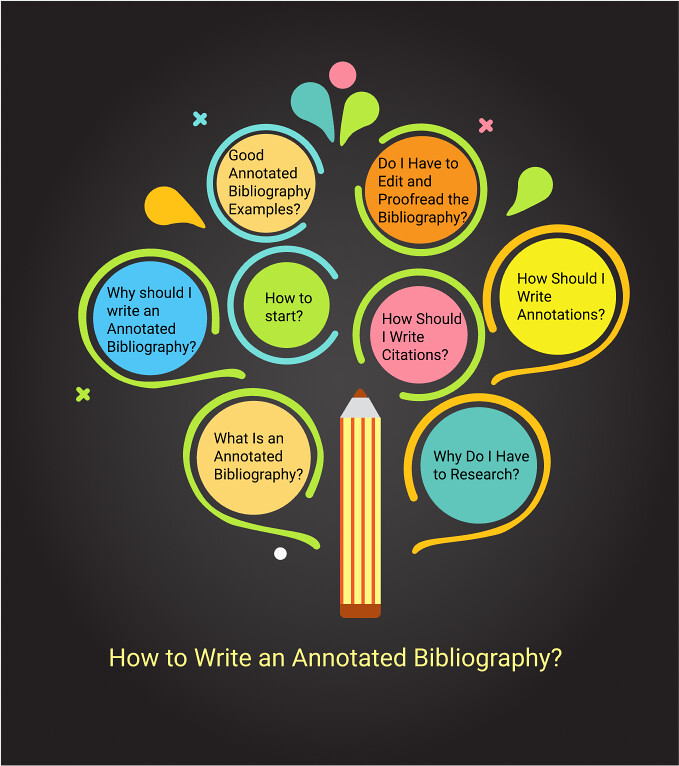It’s not your first rodeo. By now you know your professor’s entire repertoire of assignments and can afford to doze off while the prof drones on about the latest essay. However, the prompt gives you pause. What is an annotated bibliography? Where did this come from? Why do you have to waste your time on it?
The short answer to all your questions is hiring a professional writer to do everything for you while you kick back. However, if you feel this assignment is a challenge worthy of your time and effort, we’ll answer all your questions and guide you through the process of creating an annotated bibliography. Let’s start from the top.
What Is an Annotated Bibliography?
Think of an annotated bibliography as a perfect dry martini, shaken not stirred. Citations are your vermouth, annotations are your vodka, and their correct combination and formatting make the ideal drink worthy of James Bond’s praise. Like with mixing the right cocktail, the proper citation style makes a world of difference.
You must be the master of APA and MLA styles, and you won’t stumble over citations. Annotations, however, can ruin your grade. Some assignment call for summaries while others require evaluation and reflection. Be sure to consult your professor about annotations’ particularities if they are not specified in the prompt.
Why should I write an Annotated Bibliography?
You must have asked this question about multiple assignments and gotten the same answer. It’s “Because your professor says you must”. However, there are lots of better reasons for you to master the art of writing annotated bibliographies:
- You will put the skill to use after graduating from college. This assignment conditions your mind to process large amounts of data and summarize them in a couple of short sentences following a set structure. Such a skill will be useful whether you go on to work in Media, IT, Education, or Retail.
- You put your critical thinking through a workout. Research is tedious, and you are always tempted to use the first five results of the Google search. Annotated bibliography makes you take a step back and evaluate each source, consider its credibility, usability, and reliability. In the age of fake news, critical thinking is your friend, and you should embrace every chance to flex your analysis muscles.
- You save time in the short-term. If your research or term paper needs 20+ citations, you will lose track of the useful references in a blink. Short annotations are usually enough to remind you which of the books or articles you wanted to cite without having to rifle through them again. Therefore, you save time on research and free up hours to finish writing or editing the paper.
- You save time in the long run. If you have decided on the major and plan to attend certain classes, make annotated bibliographies for the largest assignments and keep them for later use. You might need to use the sources again or cite references you’ve found but haven’t used in previous papers. The annotations will save you days of research, especially if you are working on your Master’s or Ph.D. thesis.
Where Should I Start?
Always start with what you have. In the beginning, your only available resource is the assignment prompt. Read it carefully and highlight the keywords that specify the parameters of the task. Pay attention to verbs and numbers that set the boundaries of the assignment. For instance, the professor can set the maximum word count for every annotation or the bibliography as a whole, define the formatting style or set the number of references.
At this stage, make sure you understand what type of annotation your professor expects. Three aspects can be present separately or combined within each entry: summary, evaluation, and reflection. Read on to learn how they differ and how you can complete them without breaking a sweat.
Why Do I Have to Research and Take Notes?
Unless the professor provides you with a list of references, research is an integral part of any assignment. Unlike your other papers, the one with an annotated bibliography will require more sources. You have to skim them all and decide which are suitable for your purposes, and which can be discarded.
Notes are necessary to make outlining and citing easier. Your note about a particular source should include:
- Bibliographic data (Title, author, publisher, year, and more);
- Main ideas and arguments;
- Quotes you might use in the paper with page numbers;
- Your opinion on the credibility of the source.
These notes will come in handy whether you use them for writing the paper or the annotated bibliography. If you rely on digital tools, add tags to notes to make your search through them manageable. If you are old school and prefer pen and paper to a laptop, store the notes in a notebook or binder with dividers to keep them organized.
How Should I Write Citations?
Creating the “Work Cited” or “References” sections of the annotated bibliography is the first of the writing steps. Follow the formatting style specified by your professor. If you have forgotten the specifics of MLA, APA, or Chicago styles, check out the Purdue Writing Lab website. Their guidelines are easy to follow.
However, there is an easier way to format your citations. Use specialized software or online apps to do the job for you. Easybib and Citethisforme create citation automatically based on the style you chose, the reference type, and other information you provide. Both tools are free, but if you need to create citations in bulk or use specific citation styles, go for the premium subscription. It will save your time and make citing a pleasure.
How Should I Write Annotations?
Depending on the assignment, your annotations can include one or more of the following sections:
- Summary. This part is present in most annotations as it covers the main ideas and arguments of the resource. Think of how you can summarize the reference in a couple of sentences, use your paraphrasing skills. To make the job easier, rewrite and tighten up the abstract you can find before the article or on the back of the book. You can also search online for a concise description of your reference.
- Evaluation. While the first section of the annotation should be objective, the second part is where you express your opinion and assess the source. Was it helpful in your research? Is the author objective or biased? Can you trust the information you found? Is this source better or worse compared to others? Avoid outright criticism in the annotation. Otherwise, the professor will question your choice of references and lower the grade. If the source doesn’t fit your goals or seems useless, omit it and find a better reference, but keep the annotation for later use.
- Reflection. Now is the time to decide how the resource will fit in with your research. Describe the facts, quotes, or examples you can use in your paper. Consider other sources you’ve selected and how they work together to strengthen your arguments. This part will be of great help when you work on the outline and thesis statement. If the professor requires your reflection and evaluation, you want to write an annotated bibliography before the paper, even if you usually leave citation for last.
Do I Have to Edit and Proofread the Bibliography?
While an annotated bibliography differs greatly from essays and other papers, it needs the same post-writing treatment. Before submitting the bibliography, go through:
- Editing. Take one last look at the assignment prompt and ask yourself whether your paper meets its requirements. Read through the annotations and ensure they are structured, logical, and concise. Your task is made easier by short paragraphs that aren’t connected so editing won’t take much time.
- Proofreading. If you still rely on a standard word processor spell check, try Grammarly or any other professional tool. You’ll be surprised how many more errors you will find. While annotated bibliography is not as critical an assignment as admission essay or term paper, typos make professors mad. The less missing commas there are in your paper, there higher your grade will be.
- Formatting. Keep the chosen style at the forefront of your mind and ensure your paper meets all requirements before you turn it in. Whether your professor is a fan of the APA or MLA style, the bibliography should look streamlined, well-organized, and professional. Formatting mistakes stick out like a sore thumb and will cost you points off the final grade. Check out a good example of an annotated bibliography at the end of this post and use it as your guiding star.
Are There Good Annotated Bibliography Examples?
If you need an example of an annotated bibliography to get started, we’ve got you covered. Here you will find the samples for APA, MLS, and Chicago Manual styles. You’ll notice the entries are of different length. While some annotations include evaluation along with the work’s summary, others are limited to a short overview. You should defer to your professor’s requirements on the annotations’ word count and content.
As always, WritePaperForMe is here to pick up the slack if you are not feeling up to writing the annotated bibliography. However useful the skill is, it is not worth wasting hours and days of your youth when a professional can do it for you for just a couple of bucks.



Comments (0)
Thank you for your comment! 🌟
It has been submitted and is awaiting moderation. Stay tuned—it will be visible soon!